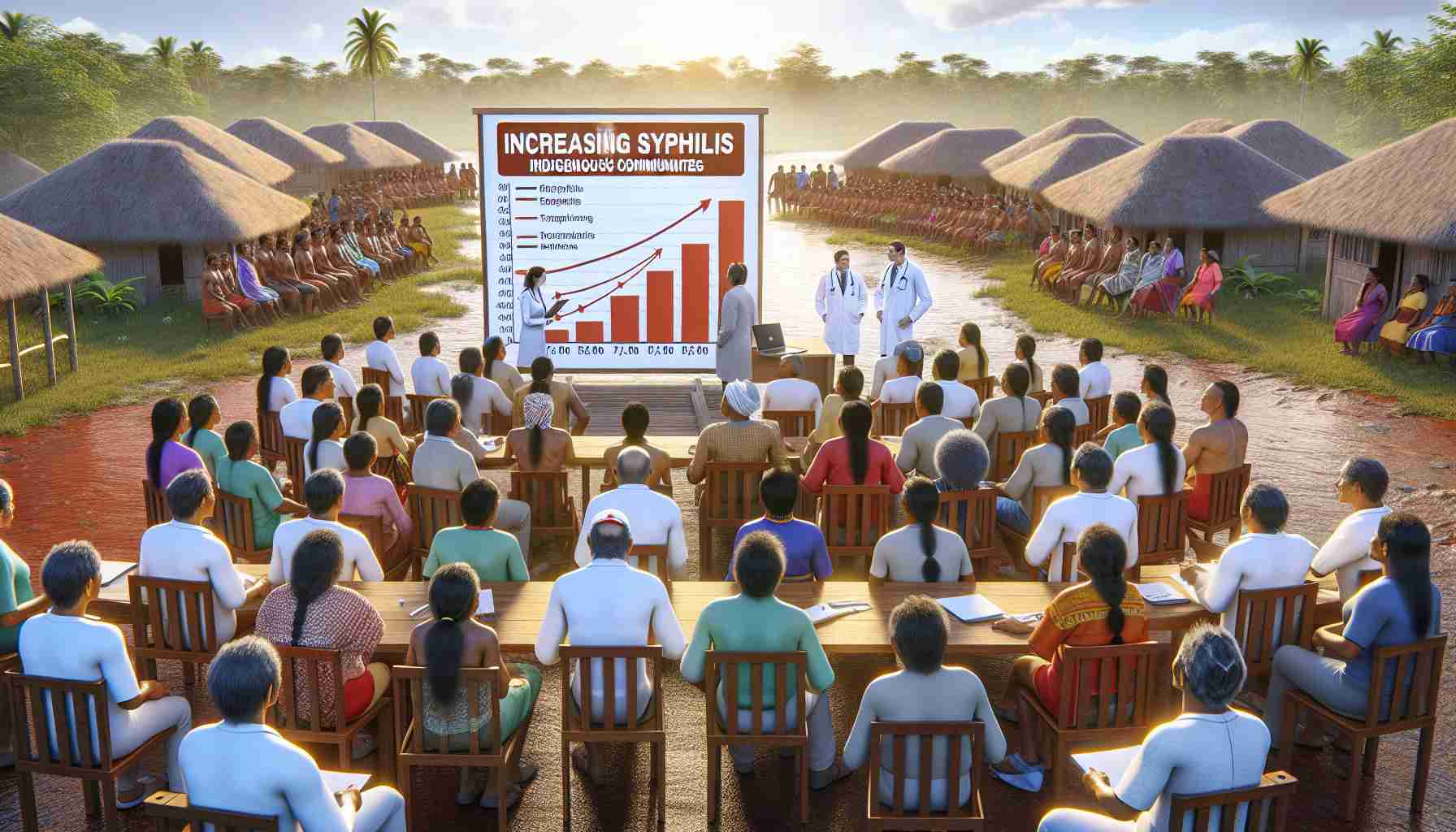
An alarming increase in syphilis cases is impacting Indigenous communities across the country, with health care providers implementing strategies to combat the stigma surrounding the sexually transmitted disease.
Reports show a significant surge in syphilis cases among American Indians and Alaska Natives, particularly notable on the Navajo Nation where cases spiked by over 2,000 percent from 2015 to 2022. Experts attribute this rise to various factors exacerbated by the COVID-19 pandemic, including social isolation, deteriorating mental health, and increased substance use leading to riskier sexual behaviors.
Efforts to address the issue include expanding testing and treatment services, as well as promoting open dialogue about syphilis and eliminating the associated stigma.
Health professionals emphasize the importance of seeking early care and destigmatizing discussions around the disease. Dr. Loretta Christensen, director of the Indian Health Service, stresses the need for individuals to understand that it’s acceptable to seek treatment for syphilis without judgement.
Despite the challenges posed by the spike in cases, the focus on education, testing, and treatment offers hope for curbing the spread of syphilis within Indigenous communities.
The Rise in Syphilis Cases in Indigenous Communities: Unveiling Further Insights
The escalating syphilis crisis affecting Indigenous communities nationwide unveils additional concerning facets beyond what initial reports have illuminated. Amid this public health challenge lie crucial questions demanding insight and resolution.
What are the underlying reasons behind the surge in syphilis cases among Indigenous populations?
The sharp uptick in syphilis cases among American Indians and Alaska Natives transcends singular causation. Insights indicate intertwined factors including inadequate access to healthcare services, historical trauma leading to mistrust in mainstream medical institutions, and limited sexual health education tailored to Indigenous cultural perspectives.
How does the intersection of COVID-19 and syphilis impact Indigenous communities?
The amalgamation of the COVID-19 pandemic and the syphilis outbreak poses multifaceted challenges. COVID-19-induced disruptions to routine healthcare services, economic disparities, and heightened societal stress compound the vulnerabilities faced by Indigenous individuals, augmenting the risk factors associated with syphilis transmission.
What are the key challenges in implementing effective syphilis prevention strategies among Indigenous populations?
One prominent challenge lies in reconciling traditional healing practices with Western medical approaches, navigating cultural sensitivities, and fostering community trust in healthcare providers. Additionally, the scarcity of culturally competent healthcare professionals specializing in sexual health within Indigenous communities poses a formidable barrier to comprehensive syphilis prevention efforts.
Advantages and Disadvantages of Ongoing Syphilis Mitigation Efforts:
Advantages:
– Increased availability of testing and treatment services tailored to Indigenous communities promotes early detection and intervention.
– The emphasis on open dialogue around syphilis fosters awareness and reduces stigma, encouraging individuals to seek care proactively.
Disadvantages:
– Resource constraints may impede the scalability and sustainability of syphilis prevention programs within Indigenous communities.
– Overcoming deeply entrenched stigmas and misconceptions surrounding syphilis demands persistent advocacy and culturally relevant messaging.
In light of the intricate landscape surrounding the surge in syphilis cases among Indigenous communities, the Centers for Disease Control and Prevention offer valuable resources on syphilis prevention tailored to diverse populations. These initiatives complement community-driven interventions aimed at addressing the root causes of the syphilis crisis within Indigenous populations.
